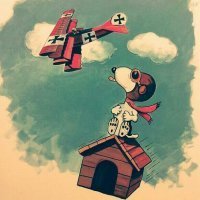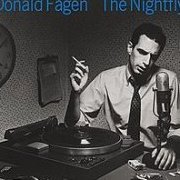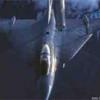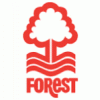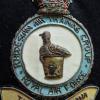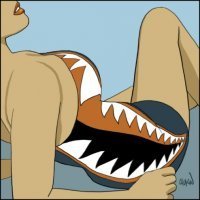Search the Community
Showing results for tags 'T-6'.
-
Hello, While searching for an interesting early US WWII-era color scheme for my future Texan project, I came across pics of this interesting bird: img source: The American air power museum img source: TVL1970 via Flickr Is this color scheme historically authentic? I am sure the inscription behind the wheels is not, but what about the black undersides, nose-art and serials? Thanks, Aleksandar
-
Special Hobby is to rebox the 1/72nd Academy AT-6G Texan with new parts in order to propose earlier AT-6/SNB and Harvard Mk.IIB-IV versions. Source: https://www.specialhobby.info/2021/01/news-from-special-hobby-012021.html V.P.
- 122 replies
-
- 5
-

-
In 2021 Wolfpack Design is to rebox the Academy 1/72nd North American T-6G Texan - ref. WP17207 Source: http://www.wolfpack-d.com/htm/kit.html V.P.
- 18 replies
-
- 2
-

-

-
- T-6
- Wolfpack design
-
(and 1 more)
Tagged with:
-
Question for the historical experts. I know this is a long shot. I recently purchased the excellent 1/72 Special Hobby Harvard boxing of Academy's T-6G molds and would like to build the AT-6G of the Lebanese Air Force as provided on the Armycast Texan decal sheet Clicky Unfortunately, I only found two black an white pictures of Lebanese Texans and the question remains, is it overall natural metal or yellow? Thanks for the support. Best regards Michael
-
My second entry for this GB will be an old friend. The Heller kit, which I first built in the mid-1980s. This Revell boxing is (as it says on the box) made in Mexico, presumably by Lodela, from whom Airfix also sourced this kit. My intention is to build the Luftwaffe subject on the cover. However, that kit is molded in yellow plastic. It's difficult enough to hand-paint a kit all yellow, but onto yellow plastic? No thanks. So I'm using the silver plastic from the current Revell release of a US "warbird". I need to work out the precise shade of yellow, and the finish, but I can press ahead with building the kit in the meantime.
-
Not much to say here, this is one of two entries for the GB. I have several of these in the stash, and it's about time I built one. The Israeli aircraft has the distinctive 3-colour Israeli camouflage. I don't believe I've ever done this scheme before*, so time to remedy that. *Although I also have an F-16 waiting to be completed in the same basic scheme.
-
Some Warbirds at the Chino Airport (California) air show, May 1989. I admit, I'm not usually too excited about warbirds, but Chino and the Planes of Fame Museum usually put on a good show. SNJ-5 BuNo 51985 T-6J (Harvard Mk. 4) s/n 51-17181 T-6G s/n 49-3152 SNJ-5 BuNo 90917 (AT-6D s/n 44-80910) P-51D s/n 44-84961 P-51D s/n 45-11553 P-51D s/n 44-74908 (re-built by Cavalier with P-51H tail?) P-51D s/n 44-72811 P-51A s/n 43-6251 BT-13A s/n 41-21218 TBM-3E BuNo 91264 CT-133 133273 N2S-3 BuNo 7785 N2S-3 BuNo 7218 T-6G 49-3171 AD-6 BuNo 139606 T-28B BuNo 138172 T-28B BuNo 137801 Some unidentified Thanks for looking, Sven
- 10 replies
-
- 25
-

-

-
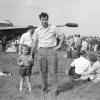
T-6G canopy to Harvard II - anyone tried the conversion?
RidgeRunner posted a topic in Aircraft WWII
Hi all, I'm looking for a little guidance from anyone who has attempted to convert a T-6G canopy to the "longer" Harvard II-type canopy. Apart from the framing - which I think I can fix with thin strips of stryrene - it seems to be that it is only the final section that is different in shape. Is that true? I have tried a CMR canopy, which I at first thought was good, but it is very poor in detail. My other thought is whether an old Airfix Harvard II canopy would be any better? I'd be very grateul of thoughts and guidance from anyone who has attempted this or has any great ideas. Thanks in advance. Martin -
Beechcraft T-6 Texan II, pics thanks to Dov.
-
- 2
-

-
- Beechcraft
- T-6
-
(and 1 more)
Tagged with:
-
North American Aviation T-6 Texan / SNJ / Harvard. Pics by Bootneck Mike of Aircraft operated by Warbird adventures in Florida, where he flew in one.
- 3 replies
-
- 4
-

-
- North american
- T-6
-
(and 2 more)
Tagged with:
-
IsraDecal Studio is to release soon a 1/72nd North American Aviation T-6 Texan II resin kit - ref.IC72006 Another one with a f. vacu canopy... Sources: http://www.isradecal.com/#!product/prd1/4454523861/t-6a-b-texan-ii-1%3A72 https://www.facebook.com/isradecal/posts/727677370710229 Don't forget also Grand Models T-6 Texan II kit: http://www.hyperscale.com/2015/reviews/kits/grandt6apreview_1.htm http://www.britmodeller.com/forums/index.php?/topic/234988703-grandmodels-172-t-6anta-texan-ii V.P.
- 7 replies
-
- 1
-

-
- 1/72
- North American
-
(and 7 more)
Tagged with:
-
What sound to be the old Occidental 1/48th Harvard Mk.IIA kit is to be reissued very soon by Italeri - ref. 2736 Source: https://www.facebook.com/ItaleriModelKit/posts/702460499826573 V.P.
-
Hi, I should have started a thread in the KUTA GB but forgot, and now I am not too far away from completion! Anyway here's an old neglected Academy kit that I have used to try out the new AK Extreme Metal paints, using Freightdog decals. There's probably all sorts of detail issues but I'm quite happy how it's turning out! Thanks for looking. FF Harvard
-
Hi all, my first post here. I have seen plenty SAAF Harvard kits painted bright orange, but not a lot of "sunfaded yellow" ones, so I gave it a go. This was one of my main reference photos It's a bit of a snap kit, with only 21 parts and no instructions on how to put it together. However no instructions was needed. It all fit together pretty well considering the age of this kit, not a lot of filler was needed. But the level of detail isn't very good, especially in the cockpit where there was absolutely no detail apart from two pilot figures with seats fixed onto them. No instrument panels either. I basically cut out the seat from the pilots' behind and "shaped" it into 2 empty seats since I did not want pilots inside. I also made instrument panels from pieces of unused plastic bits, and made seatbelts from masking tape. I painted bare minimum detail in the cockpit but didn't put a lot of effort in here. The result is the cockpit is pretty sparse still and shorts a great amount of detail, but I wasn't up to making everything myself and put in weeks of effort into this old kit's cockpit. I had to further modify the kit as this is the SNJ Navy Texan. I cut off the "bubble" behind the cockpit as well as the arial and once again made the white fin out of spare plastic. The wingtips had (what I assume to be) lights bulges which I sanded down. The propeller had a type of mini spinner which I sanded flat to match the SAAF variant. This is lacking the variable pitch "arms", but I did not have any ideas on how to make it, so I left it out. In hindsight I should also have sanded down the rivets on the wings, but that ship has sailed. The worst part of this kit is there are US roundels shaped panel lines engraved on the model. I can't imagine why, even if one is building the US version. So this had to go. I filled it with putty, sprayed, and then of course saw I didn't fill it properly. I had to fill and spray another two times before this was smooth. The only other change I made was to "deflate" the main gear tyres by heating it up and shaping it by pressing down on it, worked much better than just sanding it flat. Paint & clear coats Tamiya AS-12 baremetal silver spray. Varouis mixes of Humbrol for faded yellow and orange and the rest, all brush painted. Tamiya TS-13 Clear spray Tamiya TS-80 Flat Clear spray Decals - TAS decals (VEGAS72001) Although I could have done a lot of things better, I am satisfied with the end result. I hope you enjoy looking at it too.
- 19 replies
-
- 19
-

-
Well it's been a while, I see that I started her in May of last year, but my Harvard of the Rhodesian Air Training Group circa 1943 is finally complete, though not quite in her diorama that I have planned. The final stage was some weathering using Phil Flory's Dark Dirt - judiciously applied it's highlighted all the lovely rivet detail on the KH kit. Max
- 27 replies
-
- 23
-

-
My entry into the Lesser Built Air Forces Group Build is the 1/32 T-6 Texan by Kittyhawk. When this kit came out Zotz decals did “North American T-6 ‘Texan in the African Wars’”. I zapped that puppy up as soon as it was available. After looking at the choices on the sheet (there are 12!) I was drawn to the aircraft serving in Biafra due to its very different camo scheme. Of course astute observers will notice, nice camo scheme, but where are the national markings? It seems I am using a very fancy decal sheet that has many and various colorful options solely as a painting guide! It does not appear to have any markings on the craft and all of the stencils were painted over when the camo scheme was applied. Looks like I will have to be forced to buy a few more of these kits to justify the purchase of the decal sheet. (Hey any reason, no matter how small or illogical, will work when it comes to feeding the stash monster.) My next task is to do a bit more research to see how these were used, the weapons load and if there were any markings on them. I am looking forward to this build as this will be my first Kittyhawk kit.
-
T-6 Texan JASDF Trainer Aircraft PLATZ 1:144 The North American Aviation T-6 Texan has a long history dating from its inception as the NA-16 in 1935 right up to 1970. Even today there are flying versions in various Warbird associations. The T-6 (in various designations from NA-16, through B1 to T-6 etc.) was originally produced as a basic trainer but over time it was upgraded to an advanced trainer (AT-6 Texan) with improved performance for basic and combat type flying training, plus an added facility for training rear gunners. The T-6 was also supplied to Britain and Commonwealth nations and designated the Harvard (I & II) and was in service during WW2 and for many years postwar. Following the end of hostilities in the Far East/Pacific Theatre, Japan's military facilities were disarmed; their military hardware and infrastructure had been completely dismantled or destroyed, and the nation had resolved itself to follow a pacifist doctrine. The years following the end of WW2 however were very unstable though and the security situation in the Far East was becoming unstable, especially the rise of Communist unrest in Korea, China and the Soviet Union. Japan needed to rebuild her forces for reasons of defence and the government (with agreement from the USA) to re-establish a military force primarily for defence. The new defence force was initially titled the Japanese Defense Force (JDF) but later split into Army (JGSDF), Air (JASDF) and Maritime forces (JMSDF). Japan had a requirement to train new pilots and aircrews for these forces however they were still restricted in being able to produce their own aircraft, therefore 232 trainer aircraft, the T-6 Texan, were supplied to the JASDF by the US and were in service with them from 1954 to 1970. The Kits There are two kits in the box, each with a two canopies depicting early and late versions or even a naval SNJ-5/T-6F. Each kit contains a two part fuselage, a single piece main wing, a separate set of engine cylinders and cowling, plus tailplanes, propeller and wheel units etc. The cockpit area is open and clear for the fitting of a small deck containing two seats and rudder pedals that is included in the kit There are no control columns in the kit but these could easily be crafted from fine plastic rod and added. The seats have virtually no extra detail, however at least they are there and could have extra detail applied by any enterprising modeller to enhance the model. The surface details shows recessed panel lines and, on initial checks with diagrams, look to be correctly positioned. There are also two sets of main wheel assemblies and this caters for a wheels-up or down configuration. There is not much else on the sprue to make up the kit except for a small radome piece which would be positioned between the rear of the cockpit and the tail fin, however the kit is sufficiently detailed enough on this tiny model to give the opportunity to build a nice little model of the Texan, or even a Harvard. The instruction leaflet consists of two A4 portrait sheets; one with information, in Japanese and English; the other with pictorial view assembly details. With a model of this small size; length is approx. 2.3in (60mm) there is not much explanation needed to assemble the kit. There are two canopies with each kit, so four canopies in each box, which allows for a combination of either: 2 T-6 Texans, 2 x SNJ-5/T-6F or 1 x T-6 and 1 x SNJ-5/T-6F. Initial views of the sprue holding the canopies shows the attachment points impede about 0.5mm into the clear part of each canopy. This will require sanding and polishing back to recover the transparency of the glass. It's not much but worth mentioning. The last but, for some modellers, not least is the inclusion of stand for those who wish to depict the model in flight mode. This is a two piece construction as was standard in kits produced in the 1960s and 70s Decals This decal sheet is only 3inch (80mm) square however it contains at least 74 (I lost count then!) individual decals. There are 18 pairs of hinomaru (red circle) national insignia; 2 sets of nicely detailed walkways and anti-glare patches, plus a whole host of side letters, serial numbers and colourful emblems etc. Care needs to be taken when selecting which written decals are used as, being in Japanese, there could be confusion as to which force, Air or Navy aircraft, they should be applied to. With so many hinomaru and markings available it is helpful that Platz has provided some good placement guides. The first is an A3 size sheet, on the reverse of the instruction sheets, and shows placements for 6 different aircraft, one of which is repeated with markings for a later period in its airframe life. The other reference is a colour display that has been printed on the base of the box containing the kits. This shows two aircraft, a yellow T-6G of the JASDF and a white SNJ-5 of the JMSDF. It is important whilst applying the decals to differentiate the Japanese texts for the JASDF (航 空 自衛 隊 ) and JMSDF (海上自衛 隊) and a little time spent using one of the on-line translation apps could pay dividends - and avoid an embarrassing mix up of incorrect writings on the sides! Conclusion These little kits can be built as either the air force or naval version for the Japanese Self Defense Force; or even Harvards (with decals sourced from aftermarket or the spares box) and should look good in any 1:144 modeller's collection. The look of the sprue suggest that it is from a short-run mould; which possibly means that there won't be a massive production of these. They should be of interest to anyone who builds and collects trainer aircraft in 1:144 scale. Review sample courtesy of
-
Source: http://www.britmodeller.com/forums/index.php?/topic/234939155-texan-is-coming-nuff-said/ KittyHawk is to release a 1/32nd N.A. T-6 Texan/SNJ Harvard series for the 4th quarter of 2013. V.P.
-
Images sent to Julien to post in walkarounds. Regards,
-
North American T-6 Texan 1:32 KittyHawk History The Texan originated from the North American NA-16 prototype (first flown on April 1, 1935) which, modified as the NA-26, was submitted as an entry for a USAAC "Basic Combat" aircraft competition in March, 1937. The first model went into production and 180 were supplied to the USAAC as the BC-1 and 400 to the RAF as the Harvard I. The US Navy received 16 modified aircraft, designated the SNJ-1, and a further 61 as the SNJ-2 with a different engine. The BC-1 was the production version of the NA-26 prototype, with retractable tailwheel landing gear and the provision for armament, a two-way radio, and the 550 hp (410 kW) R-1340-47 engine as standard equipment. Production versions included the BC-1 (Model NA-36) with only minor modifications (177 built), of which 30 were modified as BC-1I instrument trainers; the BC-1A (NA-55) with airframe revisions (92 built); and a single BC-1B with a modified wing center-section. Three BC-2 aircraft were built before the shift to the "advanced trainer" designation, AT-6, which was equivalent to the BC-1A. The differences between the AT-6 and the BC-1 were new outer wing panels with a swept forward trailing edge, squared-off wingtips and a triangular rudder, producing the canonical Texan silhouette. After a change to the rear of the canopy, the AT-6 was designated the Harvard II for RAF/RCAF orders and 1,173 were supplied by purchase or Lend Lease, mostly operating in Canada as part of the British Commonwealth Air Training Plan. The next variant, the AT-6A, was based on the NA-77 design and was powered by the Pratt & Whitney R-1340-49 Wasp radial engine. The USAAF received 1,549 and the US Navy 270 (as the SNJ-3). The AT-6B was built for gunnery training and could mount a .30 in machine gun on the forward fuselage. It used the R-1340-AN-1 engine, which was to become the standard for the remaining T-6 production. Canada's Noorduyn Aviation built an R-1340-AN-1-powered version of the AT-6A, which was supplied to the USAAF as the AT-16 (1,500 aircraft) and the RAF/RCAF as the Harvard IIB (2,485 aircraft), some of which also served with the Fleet Air Arm and Royal Canadian Navy. The NA-88 design resulted in 2,970 AT-6C Texans and 2,400 as the SNJ-4. The RAF received 726 of the AT-6C as the Harvard IIA. Modifications to the electrical system produced the AT-6D (3,713 produced) and SNJ-5 (1,357 produced). The AT-6D, redesignated the Harvard III, was supplied to the RAF (351 aircraft) and Fleet Air Arm (564 aircraft). The AT-6G (SNJ-5) involved major advancements including a full-time hydraulic system and a steerable tailwheel and persisted into the 1950s as the USAF advanced trainer. Subsequently the NA-121 design with a completely clear rearmost section on the canopy, gave rise to 25 AT-6F Texans for the USAAF and 931, as the SNJ-6 for the US Navy. The ultimate version, the Harvard 4, was produced by Canada Car and Foundry during the 1950s, and supplied to the RCAF, USAF and Bundeswehr. A total of 15,495 T-6s of all variants were built, quite a few of which are still used as warbirds, demonstrations, by flight experience companies, plus used as film extras and stars. The Model This is a wholly new tooling from KittyHawk it’s certainly great to see it being released in 1:32 scale, being their first in this scale. Arriving in a very attractively designed box, with one an artists representation the aircraft in flight over a somewhat rocky area of the US. On each side are colour profiles of four of the eight colour schemes included in the kit. The box is quite deep and it’s easy to see why, as on opening it is full of styrene. The kit is contained on 6 large sprues of bluey grey styrene, with one of clear styrene and a small etched brass sheet for the seat belts. The main sprues, some of which are folded over from the centre, one of KittyHawks little idiosyncrasies, and need to snapped apart before inspecting the parts. Detail looks very refined, with engraved panel lines and raised areas where required. The styrene feels quite soft so take care when removing from the sprues. There is no sign of flash or moulding pips, but there are a number of parts which have quite large injection towers, particularly the inside of the engine cylinder parts, which will need to be carefully removed before assembling. The clear parts are very well protected from damage by being in their own separate cardboard box. The build begins with the construction of the complex looking cockpit. The seat pans are attached to the supports and each fitted with a grab handle and seat a lowering/raising bar. The cockpit floor looks like it’s meant to represent the upperside of the centre wing, but isn’t curved enough as in the real thing there is no floor for the front pilot, only the for the rear. Still once all the parts are added and the completed assembly fitted to the fuselage I doubt much of it will be seen. There is a choice of joystick styles, depending on the variant being built and these are attached to the cockpit floor, along with a pair of fott runners and a foot rest for the front pilot. The nicely moulded tubular cockpit structure is fitted out with throttle quadrants, a fire extinguisher and radio box, whilst the two rudder pedal pairs are attached to their connecting rods. The instrument panel is made up of upper and lower sections onto which the decals are positioned and a back piece, with the instrument backs moulded into it, is attached to the rear of the upper panel. The floor, tubular sides, front instrument panel and rudder pedal assembly are then assembled. The rear bulkhead is the, made up of the bulkhead, rear decking and semi circular support, is attached to the rear of the cockpit whilst the single piece front bulkhead is, naturally, fitted to the front of the cockpit. A shelf, fitted with two trim wheels, control levers and other items is fitted to the port side of the cockpit from the outside. The rear cockpit instrument panel is then fitted along with its associated coaming whilst the two piece starboard console for the front cockpit is also attached. There are two black boxes fitted to the rear decking, whilst a separate shelf is fitted to the rear bulkhead below it. A two piece rollover bar is attached between the cockpits and three internal structure parts are fitted to the rear deck. To the front bulkhead there is another control box and the two piece oil tank attached. Moving onto the engine, the first parts to be attached are the two cylinder bank halves, (once the injection posts have been removed). The cylinders are then attached to a backing plate and the valve rods are fitted to the front face, along with the magneto to the gearbox cover.. There is an option of having either a short exhaust or a long one, depending on the variant being modelled, each being in two parts, with the completed exhaust then fitted to the collector ring. This assembly is then attached to the cooling gill part along with the intake manifold and the engine fitted to the exhaust and intake manifolds. To the rear of the engine a multi part accessory gearbox is fitted as is an five piece air intake and filter. Four V shaped engine bearers are then fitted to the rear of the engine, followed by three plates that fit onto the outside strut of each bearer. The whole engine assembly is then attached to the front of the cockpit assembly and everything is sandwiched between the two fuselage halves, closing it all up. Once again depending on the option being modelled there are different parts for the front upper fuselage one with a slightly different shape for the SNJ, and the rear of the cockpit glazing, either framed or unframed. The rear upper fuselage is then fitted, as is the two piece rudder, starboard side air filter intake and two foot rests. The horizontal stabilisers are each made up of an upper and lower half and fitted with a single piece elevator. The completed parts are then attached to the rear fuselage. There doesn’t appear to be an option to have the engine cowling open so the four parts have to be glued together and slipped over the engine. The windscreen is now fitted and the option of two types of radio mast, or a DF loop fairing, large blade fairing and even what looks like a GPS fairing, again depending on which scheme the modeller is building. The propeller is made up of the two blades, four piece pitch mechanism and boss. Onto this there is a choice of either a two piece or a single piece spinner, should the option require them. The propeller can then be fitted as can the three piece cockpit canopy. The wheels are assembled from a single piece oleo/axle, onto which the two parts of the scissor link is attached. The tyres come in two halves with separate inner and outer hubs. With the main wheels done, it’s on to the wing centre section. Into the single piece lower part two pieces are added that represent the front spar that can be seen through the wheel wells. These have very prominent injection towers that need to be removed before fitting, fortunately though they are the rear face so any damage won’t be seen. With these fitted the two upper wing panels can be attached and, according to the instructions the centre flap, wheel assemblies and gear bay doors are also fitted at this time, but it may be prudent to leave until later. The outer wings, each of upper and lower halves and landing light innards which, when assembled, can be fitted out with the clear landing and navigation light glass parts, pitot probe, (on the port wing), ailerons, with mass balances and flaps.The outer wings are then attached to the centre section and the whole thing fitted to the fuselage. Finally the under nose air intake and the three piece tail wheel assembly are fitted completing the main build. Since these aircraft were used for weapon training etc, the kit comes with a variety of underwing stores, these include:- Six off T-10 Rockets and their launch rails Two off Matra 122 rocket launchers Four off 250kg Bombs Two off twin 7.7mm machine gun pods Two off 20 gallon drop tanks. Decals There are two large sheets of decals and one small, almost addendum style sheet, with markings for the following options, which I believe are all preserved machines:- USAF aircraft. Ser.No.N9623C, TA-349 “Deb”, in a very flash red white and blue scheme over natural metal. USN aircraft. Ser.No.93449, in a colourful yellow wing, medium sea grey fuselage scheme. USMC aircraft. Ser.No.90917 in overall silver scheme with yellow nose and green stripes on the wings and rear fuselage. Canadian Air Force aircraft. Ser.No. CF-UUU in overall trainer yellow with a blue nose. German Air Force aircraft. I.D. number BF + 056, in overall trainer yellow with green nose including a chequer board panel on either side. Italian Air Force aircraft. Ser.No. MM-54101 in overqall silver with yellow outer wings/tail and extreme nose of cowling. South African Air Force aircraft. In overall silver fuselage, with orange panels on the wings, tialplane and cowling plus medium sea grey panels on the upper wings. Royal Air Force aircraft. Ser.No. FT239 in brown and mid stone over light aircraft blue camouflage scheme. The decals look very well printed, with good opacity and density, in register and without too much carrier film, with the notable exception of the large USAF titles. There are a complete set of stencils for one aircraft included. Conclusion This is a great looking kit, especially considering it is Kitty Hawks first foray into 1:32 scale. The details on the parts are sharp and there is a nice finesse to them, especially the detail cockpit interior. With so many colour schemes offered, it will be difficult to choose which one to do and it’s good to see that it’s not just the schemes that change, with the different parts included; it is possible to represent each aircraft accurately as far as I can tell. There have been a number of grumbles about the cockpit floor, which, whilst it’s not accurate, it is a reasonable compromise to aid in making the kit easier to produce and perhaps build. You won’t see much of it anyway, unless the modeller wishes to de-skin the fuselage, in which case they will have the skills to reproduce the upper wing centre section. For those that want a good sized Texan/Harvard/SNJ in their collection I can highly recommend this kit. Review sample courtesy of and available soon from major hobby shops
-
Use this link instead: http://www.britmodeller.com/forums/index.php?/topic/234939162-132nd-north-american-t-6-texansnj-harvard-by-kittyhawk-sprue-shots-released/page-2#entry1518368 They are not my images nor of my kit. Regards,
- 4 replies
-
- Kitty Hawk
- Texan
-
(and 2 more)
Tagged with:



